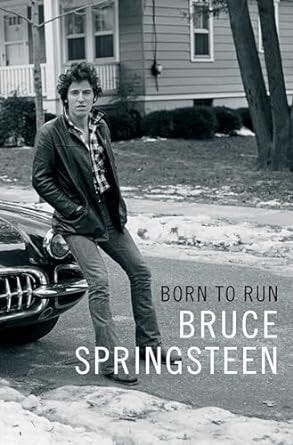How Bruce Springsteen overcame his voice (#59)
What the rock 'n' roll hall-of-famer used instead
You’ve got to pull up the things that mean something to you in order for them to mean anything to your audience. That’s where the proof is. That’s how they know you’re not kidding
The Boss
In 1965, a group of New Jersey high school kids formed a band called, The Castiles.
They selected as their lead singer “the best-looking…guy with the coolest hair in school,” George Thesiss. This was despite having on the roster, their soon-to-be star lead guitarist, Bruce Springsteen.
How was it that Springsteen — one of the most iconic voices in American rock history—was not the voice of The Castiles?
I was considered toxic in front of a microphone, my voice the butt of many…jokes.
This changed, of course. He was the lead singer four years later in 1969 for the band, Steel Mill. And, by the time his debut solo album, Greetings, came out in 1973, it was clear Bruce would sing. 40 years later, late night hosts would perform complimentary tributes to The Boss’ distinctive voice.
The obvious question: How? How did Springsteen overcome lack of talent and confidence to all-time lead singer?
Springsteen shares the secret in his memoir, Born to Run.
And it’s the subject of today’s OGT.
I’d always doubted myself as a singer. I felt I didn’t have enough true tone and range.
But, what Springsteen soon found is that he was overrating vocal talent, and underrating something much more important, if more intangible.
I didn’t give myself credit for being able to immerse myself in what I was singing. Joe Strummer, Mick Jagger and many of the great rock ’n’ roll and punk front men did not possess great voices but their blood-and-guts conviction, their ownership of their songs, made up for it and lent them deep personal style.
Springsteen credits his ability to overcome weak natural vocals with belief in what he was saying. For Springsteen, the old axiom turned out to be true: if you really believe it, so will everyone else.
Most of my writing is emotionally autobiographical. I’ve learned you’ve got to pull up the things that mean something to you in order for them to mean anything to your audience. That’s where the proof is. That’s how they know you’re not kidding.
If you read1 this book, there’s one thing that becomes clear: this guy is not kidding.
The same electricity and conviction that overcame his voice, that got through to millions of people over the last half century, that lives in the high school and college memories of nearly every 30 or 40 or 60-something born on the Eastern Seaboard, bursts throguh almost every word of this book.
No passage shows this better than the last:
I fought my whole life, studied, played, worked, because I wanted to hear and know the whole story, my story, our story, and understand as much of it as I could. I wanted to understand in order to free myself of its most damaging influences, its malevolent forces, to celebrate and honor its beauty, its power, and to be able to tell it well to my friends, my family and to you. I don’t know if I’ve done that, and the devil is always just a day away, but I know this was my young promise to myself, to you.
This, I pursued as my service. This, I presented as my long and noisy prayer, my magic trick. Hoping it would rock your very soul and then pass on, its spirit rendered, to be read, heard, sung and altered by you and your blood, that it might strengthen and help make sense of your story.
Go tell it.
The OGT
I love this quote: “you’ve got to pull up the things that mean something to you in order for them to mean anything to your audience. That’s where the proof is. That’s how they know you’re not kidding.”
It makes me think of what Phil Knight learned about sales. Why he found he could sell NIKE shoes when he never could sell anything else.
It was practically the same lesson:
I’d been unable to sell encyclopedias, and I’d despised it to boot. I’d been slightly better at selling mutual funds, but I’d felt dead inside. So why was selling shoes so different?
Because, I realized, it wasn’t selling. I believed in running. I believed that if people got out and ran a few miles every day, the world would be a better place and I believed these shoes were better to run in. People, sensing my belief, wanted some of that belief for themselves.
Belief, I decided. Belief is irresistible.
Or listen—he reads it





